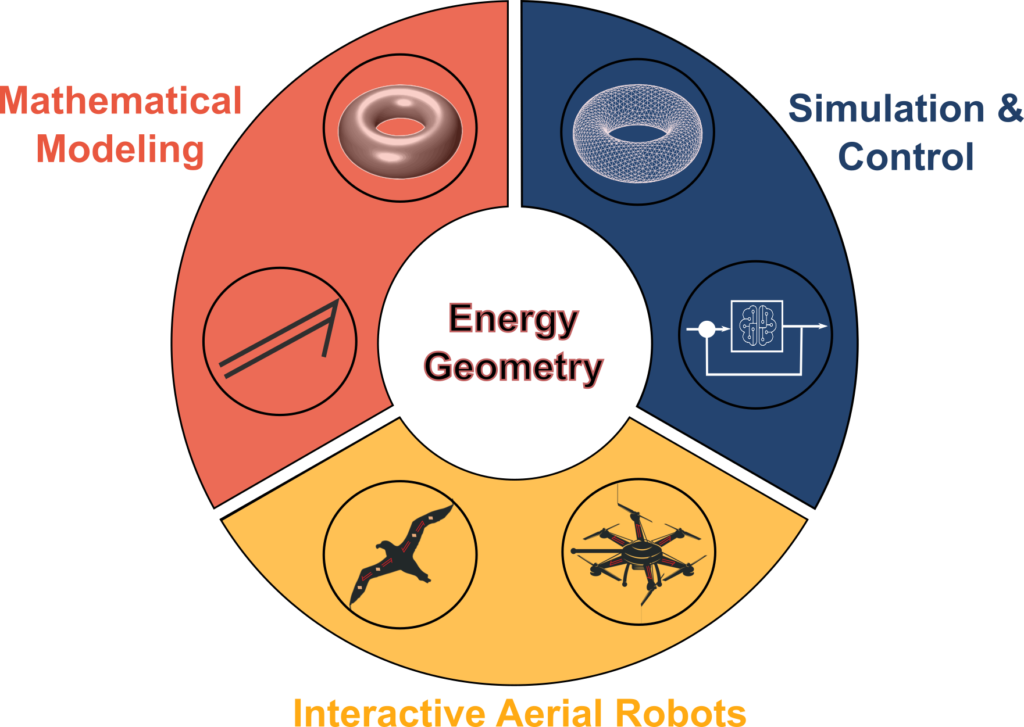Research Overview

The focus of my research work is on advanced robotic systems, with an emphasize on aerial robotics which is naturally an interdisciplinary field at the intersection of mechatronics and aerospace engineering. While my work spanned a wide spectrum of aerial-robotic problems from very practical to very theoretical ones, there has been two unique features of my research. Namely, putting back energy and geometry back in robotics! Both features are formalized by the Geometric Port-Hamiltonian framework which I aim in the years to come to advance and apply in different areas of robotics. These two features define my research philosophy and serve as a fundamental ingredient in my scientific identity.
The first pillar of my work focuses on the theoretical foundations and practical application of the port-Hamiltonian framework which is an emerging framework for mathematical modeling and control of complex physical systems. This framework represents a paradigm that provides a set of beliefs, terminology, practices and systematic procedures shared among an increasing community of researchers and engineers interested in complex dynamical systems. By mastering the techniques of this paradigm, I have been able, using the same tools, to mathematically model finite-dimensional systems, such as multi-body dynamics, as well as infinite-dimensional systems, such as fluid flow, electromagnetism, nonlinear elasticity, fluid structure interaction and thermo-hydrodynamic systems. All of these multi-physics domains serve as the basic foundation for mechatronic and robotic systems in general, which makes the port-Hamiltonian a very powerful and rewarding technique for students and researchers.
The second pillar of my work focuses on abstract mathematical treatments for describing dynamical systems, in contrast to coordinate-based treatments prevalent in the robotics community. This abstract treatment uses advanced tools from differential geometry and applied mathematics which allow the development of powerful computational tools for robotic systems.
As a showcase of these two pillars, I focused on the application of the port-Hamiltonian framework to the emerging field of aerial physical interaction. In this field aerial robots are being enhanced and utilized as manipulators of the environment and not simply as remote sensors. I had a number of contributions in this area starting from the theoretical design of novel control algorithms to the mechatronics design of the aerial robot as well as augmenting it with high-level capabilities by integrating it with state-of-the-art computer-vision and machine-learning algorithms. Another application that I focused on is the application of the port-Hamiltonian framework to the field of bio-inspired flapping robots. In this other emerging field of aerial robotics, I have worked on significant theoretical advancements to the framework for modeling fluid dynamics and nonlinear elasticity as well as the development of new simulation tools for such complex dynamical systems.